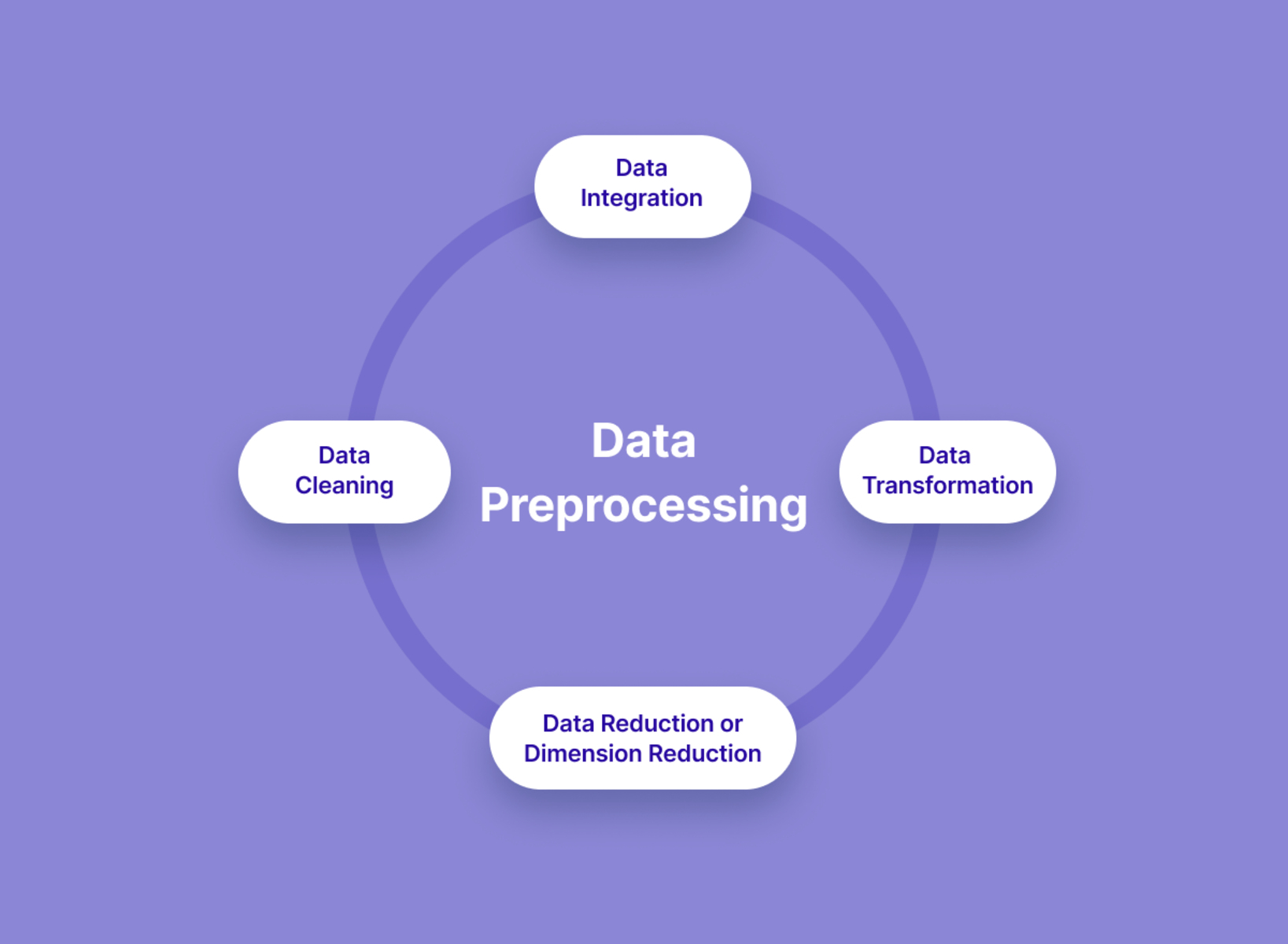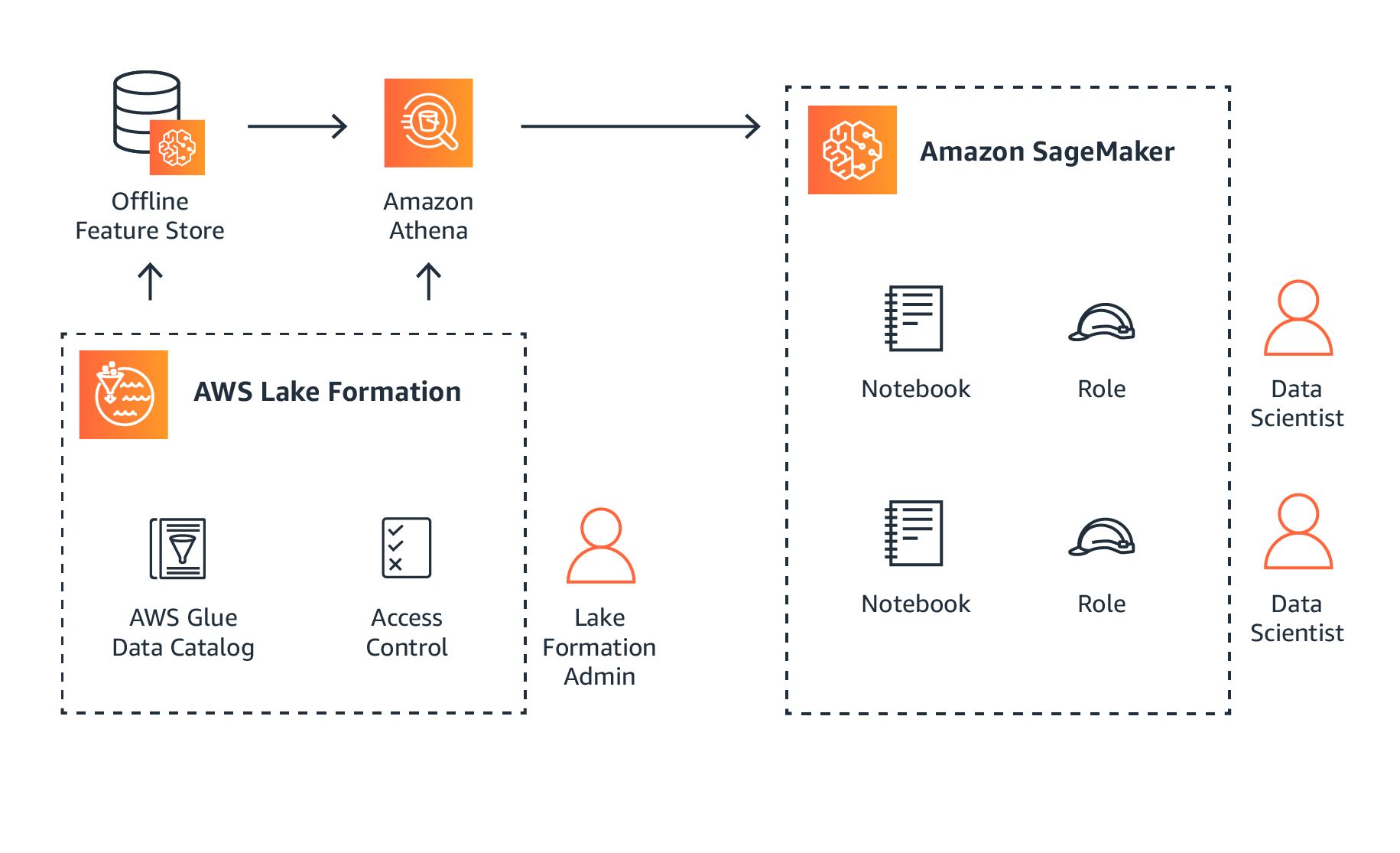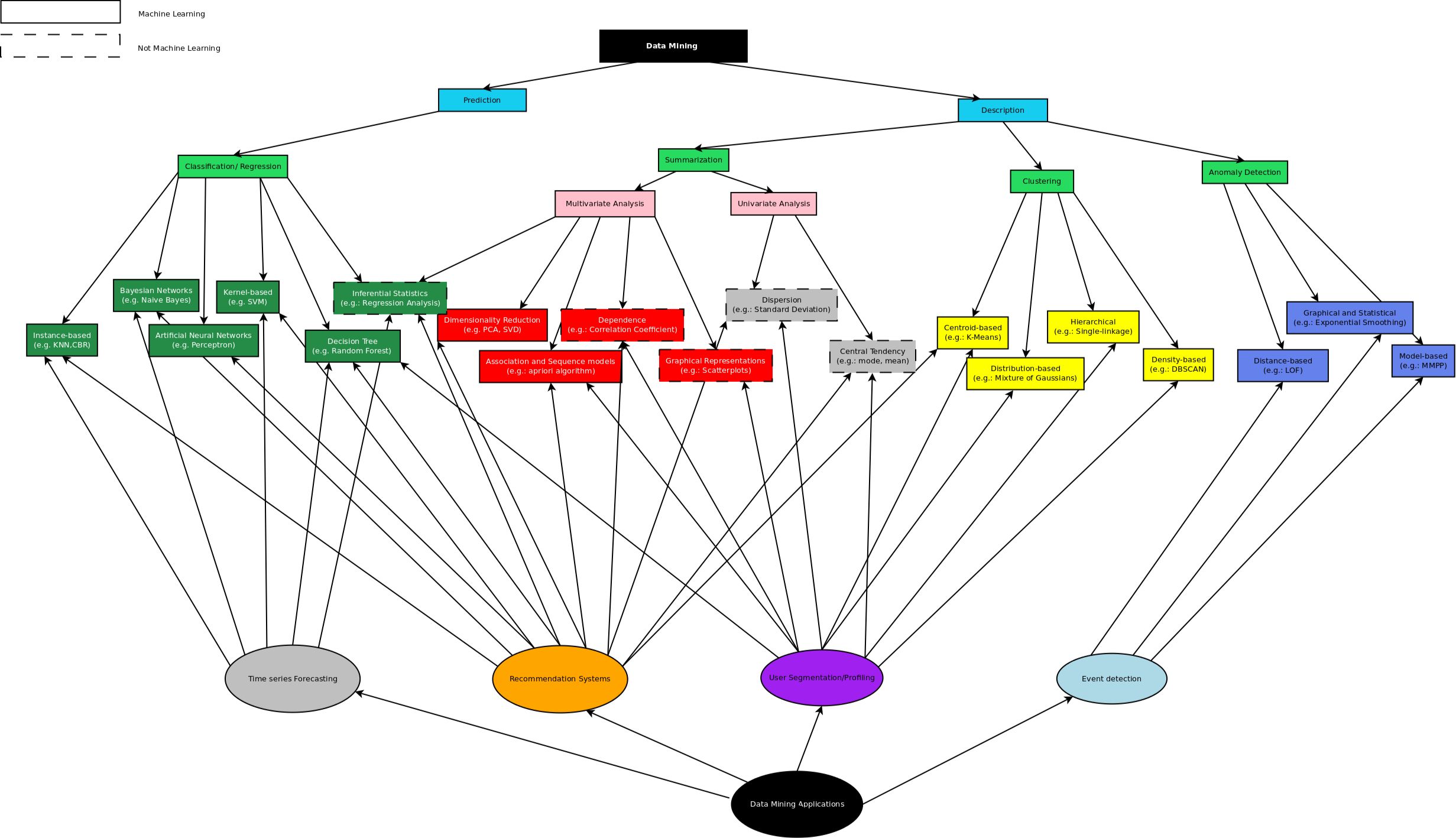Introduction
Welcome to the fascinating world of machine learning! In this rapidly advancing field, machines are trained to learn and make predictions based on vast amounts of data. However, before we can unleash the power of machine learning algorithms, we need to ensure that the data we are working with is clean and reliable.
Data cleaning, also known as data cleansing or data scrubbing, is the process of identifying and correcting or removing errors, inconsistencies, and inaccuracies in datasets. It is a crucial step in the machine learning pipeline, as the quality and integrity of the data directly impact the accuracy and effectiveness of the models built upon it.
Imagine trying to build a predictive model using faulty or incomplete data – the results would be flawed and unreliable. Data cleaning is essential to ensure that the data is accurate, consistent, and reliable, allowing machine learning models to make accurate and meaningful predictions.
There are many reasons why data cleaning is of utmost importance in machine learning. First and foremost, data is often collected from multiple sources, such as databases, websites, and sensors. Each source may have its own quirks and inconsistencies, leading to variations in data formats, missing values, and duplicate entries. Data cleaning helps to address these issues, ensuring that the data is consistent and standardized across the board.
Another crucial aspect of data cleaning is handling missing data. In real-world scenarios, it is common for data to have missing values, which can hinder the accuracy and performance of machine learning models. Data cleaning techniques are employed to fill in missing values or remove instances with excessive missing data, thereby ensuring that the dataset is complete and usable for analysis.
Duplicate data can also pose challenges in machine learning. Duplicates may arise due to various reasons, including data entry errors or merging of datasets. These duplicates can skew the results and create bias in the model. Data cleaning techniques such as deduplication help in identifying and removing duplicate records, leading to a more accurate and reliable dataset.
Outliers, which are extreme or unusual values in the dataset, can have a significant impact on the outcomes of machine learning models. Data cleaning involves identifying and handling outliers, either by removing them or treating them separately, to avoid distortion in the results and improve the model’s performance.
Inconsistent data, such as conflicting values or data recorded in different units, can lead to confusion and errors in machine learning models. Data cleaning techniques ensure that the data is consistent and standardized, enabling models to correctly interpret and utilize the information.
Lastly, irrelevant data can clutter the dataset and increase the complexity of machine learning models. Data cleaning involves identifying and removing irrelevant features or variables that do not contribute to the model’s predictive power. This helps to streamline the dataset and improve the efficiency and performance of the models.
Data cleaning is a critical step in the machine learning process, and it plays a significant role in ensuring the reliability and accuracy of the models. In the following sections, we will explore various data cleaning techniques and best practices that can be applied to ensure high-quality datasets for machine learning tasks.
What is Data Cleaning?
Data cleaning, also referred to as data cleansing or data scrubbing, is the process of identifying and correcting or removing errors, inconsistencies, and inaccuracies in datasets. It is an essential step in the data preparation phase, where data scientists and analysts ensure that the data they are working with is reliable, accurate, and consistent.
Data comes from various sources and in different formats, making it prone to errors and inconsistencies. These errors can arise from human entry mistakes, data integration issues, sensor malfunctions, or even natural data variation. Data cleaning involves assessing and rectifying these issues to improve the overall quality of the dataset.
At its core, data cleaning involves several key activities:
- Data Validation: This step involves verifying the integrity and accuracy of the data. It includes checking for missing values, data format errors, and ensuring that the data conforms to pre-defined validation rules or constraints. Data validation helps identify any erroneous or incomplete entries in the dataset.
- Data Correction: Once errors are identified, the next step is to correct them. This may involve replacing missing values with appropriate estimates or imputing them using statistical techniques. Data correction also includes fixing inconsistent or incorrect data values, standardizing data formats, or resolving conflicts between different data sources.
- Data Transformation: Data cleaning often requires transforming the data to make it more suitable for analysis or modeling. This could involve converting data into a more appropriate scale, merging or splitting variables, aggregating data at different levels, or creating new features based on existing ones. Data transformation ensures that the data is compatible with the chosen analysis or modeling techniques.
- Data Deletion: In some cases, it may be necessary to delete certain data points or even entire records that are deemed irrelevant, inconsistent, or too noisy to be useful. Deleting data should be done judiciously, considering the potential impact on the overall dataset and the specific goals of the analysis.
Data cleaning is not a one-time process; it requires ongoing monitoring and maintenance to keep the dataset updated and error-free. As new data is collected or integrated, it is important to apply the same cleaning techniques to ensure the continued accuracy and reliability of the dataset.
The benefits of data cleaning extend beyond improving the quality of the dataset. Properly cleaned data helps in generating more accurate insights, making informed decisions, and building robust machine learning models. By removing errors and inconsistencies, data cleaning reduces bias, enhances predictive accuracy, and contributes to the overall reliability and robustness of the data-driven analysis.
In summary, data cleaning is a fundamental step in the data analysis and modeling process. It involves the identification and correction of errors, inconsistencies, and inaccuracies in datasets to ensure their reliability and usability. By ensuring the quality of the data, data cleaning plays a crucial role in generating valuable insights and maximizing the effectiveness of data-driven decision-making processes.
Why is Data Cleaning important in Machine Learning?
Data cleaning is a crucial step in the machine learning pipeline as it directly impacts the accuracy and effectiveness of the models. Here are several reasons why data cleaning is important in machine learning:
- Data Quality: Machine learning models learn patterns and make predictions based on the data they are trained on. If the data is of poor quality, with errors, inconsistencies, or missing values, it can lead to misleading results and unreliable predictions. Data cleaning ensures that the data is accurate, reliable, and consistent, providing a solid foundation for building effective models.
- Predictive Accuracy: Clean data helps in improving the accuracy of machine learning models. By eliminating errors and removing unnecessary noise, data cleaning reduces bias and improves the quality of the predictions. With high-quality data, models can better capture relevant patterns and relationships, leading to more accurate and reliable predictions.
- Feature Selection and Dimensionality Reduction: Data cleaning involves identifying and removing irrelevant or redundant features from the dataset. This process, known as feature selection or dimensionality reduction, helps in improving the efficiency and performance of machine learning models. Removing irrelevant features reduces complexity, minimizes overfitting, and focuses the model on the most influential variables.
- Handling Missing Data: Real-world datasets often have missing values, which can hinder the performance of machine learning models. Data cleaning techniques, such as imputation or removing instances with excessive missing data, help in addressing this issue. By handling missing data appropriately, data cleaning ensures that the dataset is complete and usable for analysis, leading to more accurate and reliable models.
- Outlier Detection and Treatment: Outliers, which are extreme or unusual values in the dataset, can significantly impact the performance of machine learning models. Data cleaning techniques are used to detect and handle outliers, either by removing them or treating them separately. By addressing outliers, data cleaning helps in reducing the distortion in the results and improving the model’s robustness.
- Data Consistency: Inconsistent data, such as conflicting values or data recorded in different units, can confuse machine learning models and lead to erroneous predictions. Data cleaning ensures that the data is consistent and standardized, allowing models to correctly interpret and utilize the information. Consistent data improves the reliability and accuracy of the models.
- Building Trust: Clean and reliable data builds trust in the machine learning models and the insights generated from them. Stakeholders, decision-makers, and end-users are more likely to trust models that are based on high-quality data. Data cleaning plays a vital role in ensuring that the models and the decisions derived from them are trustworthy and reliable.
In summary, data cleaning is essential in machine learning to ensure the quality, accuracy, and reliability of the data. It improves predictive accuracy, reduces bias, handles missing data, addresses outliers, ensures data consistency, and ultimately builds trust in the models and the insights derived from them. By investing time and effort in data cleaning, organizations can unlock the full potential of machine learning and make informed decisions based on reliable and accurate data.
Common Data Cleaning Techniques
Data cleaning involves applying various techniques to identify and rectify errors, inconsistencies, and inaccuracies in the dataset. Here are some common data cleaning techniques:
- Handling Missing Data: Missing data is a common issue in datasets and can lead to biased or inaccurate analysis. Data cleaning techniques for handling missing data include imputation, where missing values are estimated or filled in using statistical methods. Another approach is to remove instances with excessive missing data if the missing values cannot be reliably imputed.
- Removing Duplicate Data: Duplicate data can distort analysis and create biases in machine learning models. Data cleaning techniques for handling duplicate data involve identifying and removing duplicate records. This can be done by comparing key fields or using algorithms designed to detect similarities between records.
- Handling Outliers: Outliers are extreme values that can significantly impact the results of data analysis or machine learning models. Data cleaning techniques for handling outliers include identifying and removing them or treating them separately. This can be done through statistical methods, such as Z-scores or IQR (Interquartile Range).
- Dealing with Inconsistent Data: Inconsistent data, such as conflicting values or data recorded in different units, can cause errors and confusion in analysis. Data cleaning techniques for handling inconsistent data involve standardizing formats, resolving conflicts, and converting data into a consistent representation. This ensures that the data is uniform and can be properly interpreted by machine learning models.
- Addressing Inaccurate Data: Inaccurate data can arise from human errors, measurement errors, or data integration issues. Data cleaning techniques for addressing inaccurate data include data validation, where inconsistencies or errors are identified and corrected. This can involve cross-referencing with external sources, applying validation rules, or employing outlier detection methods.
- Handling Incomplete Data: Incomplete data can arise from missing values, partially recorded information, or varying data collection methodologies. Data cleaning techniques for handling incomplete data involve imputation, where missing values are estimated based on existing data or domain knowledge. Another approach is to remove instances with excessive missing data if the missing values cannot be reliably imputed.
- Standardizing and Transforming Data: Standardizing and transforming data involves bringing different variables or features to a common scale or format. Data cleaning techniques for standardizing and transforming data include normalizing numerical variables, encoding categorical variables, and scaling features to make them comparable. This ensures that the data is suitable for analysis and modeling.
These are just a few examples of the common data cleaning techniques used in practice. The choice of techniques depends on the specific characteristics of the dataset and the goals of the analysis or modeling task. It is important to apply these techniques carefully, considering the potential impact on the overall dataset and the specific requirements of the analysis.
Remember that data cleaning is an iterative process that requires careful consideration and continuous monitoring. It is crucial to assess the effectiveness of the applied techniques and make adjustments as necessary to ensure the dataset’s quality and reliability.
Handling Missing Data
Missing data is a common challenge in datasets and can significantly impact the accuracy and reliability of data analysis and machine learning models. Handling missing data is an important step in the data cleaning process, and there are several techniques that can be employed:
Identification: The first step in handling missing data is to identify the presence and patterns of missing values in the dataset. This can be done by examining the dataset for null values or by using summary statistics to determine the percentage of missing data in each variable.
Deletion: One approach to handling missing data is deleting the instances or variables with missing values. This technique is known as complete case analysis or listwise deletion. While simple, this method can result in a loss of data and potential bias if the missing data is not random.
Imputation: Imputation is the process of filling in missing values with estimated or imputed values. Imputation methods include mean or median imputation, where missing values in a variable are replaced with the mean or median of the available data in that variable. Another method is regression imputation, where missing values are estimated based on a regression model using other variables as predictors. There are also more advanced imputation techniques, such as multiple imputation or k-nearest neighbors imputation, which take into account the relationships between variables in the dataset.
Missing Indicator: In some cases, missing data may carry important information or be a relevant feature in itself. Rather than imputing the missing values, a missing indicator variable can be created to denote whether a particular value is missing or not. The missing indicator variable can be used as a feature in the analysis or modeling process, capturing the potential influence of missingness on the outcome.
Domain Knowledge and Expert Opinion: In certain situations, missing data can be filled in based on domain knowledge or expert opinion. This approach requires subject matter expertise to make informed guesses or estimates of the missing values. While subjective, this method can be valuable when reliable domain knowledge is available.
It’s important to consider the potential impact of different missing data handling techniques on the analysis or modeling results. Each method has its own assumptions and limitations, and the choice of technique should be based on the specific characteristics of the dataset and the goals of the analysis.
Regardless of the approach used, documenting the nature and extent of missing data, as well as the chosen imputation method, is essential for transparency and reproducibility of the analysis. This allows other researchers or analysts to understand the potential implications of missing data on the results.
Handling missing data is a critical aspect of data cleaning, ensuring that the dataset is complete and reliable for analysis and modeling tasks. By carefully considering the techniques mentioned above and choosing the most appropriate method for the specific dataset, analysts can effectively manage missing data and minimize its impact on the accuracy and validity of the results.
Handling Duplicate Data
Duplicate data, where multiple records with identical or similar information exist in a dataset, is a common issue that can introduce bias and inaccuracies in data analysis and machine learning models. Handling duplicate data is an important step in the data cleaning process, and there are several techniques that can be employed:
Identifying Duplicate Data: The first step in handling duplicate data is to identify and quantify the extent of duplication in the dataset. This can be done by comparing records using unique identifiers or key fields. Duplicate records can be identified based on exact matches or similarity measures, such as Levenshtein distance or Jaccard similarity.
Removing Exact Duplicates: The simplest approach to handling duplicate data is to remove exact duplicate records from the dataset. This can be done by comparing all fields in a record and removing duplicate entries. However, it is crucial to exercise caution when removing exact duplicates, as they could represent genuine instances in certain scenarios.
Deduplication: Deduplication is the process of identifying and removing similar or nearly identical duplicate records in the dataset. This technique involves using algorithms or techniques that compare the similarity between records and determine their likelihood of being duplicates. Various algorithms, such as fuzzy matching, clustering, or machine learning-based approaches, can be used to perform deduplication.
Merging Duplicate Records: In some cases, duplicate records may contain valuable information that can be consolidated into a single, representative record. This can involve merging fields or attributes from duplicate records into a single record, ensuring that the resulting record retains the most complete and accurate information.
Record Linkage: Record linkage, also known as entity resolution, is the process of identifying and linking records that refer to the same entity in multiple datasets. This technique is helpful when dealing with data integration or combining datasets from different sources. Record linkage involves comparing and matching key fields across datasets, and it can be performed using probabilistic matching algorithms or machine learning techniques.
When handling duplicate data, it is important to consider the context and purpose of the data analysis. Some duplicate records may be intentional and contain valid information, while others may be the result of data entry errors or data integration issues. It is crucial to carefully evaluate the implications of removing or merging duplicate records on the analysis or modeling results.
Documenting the steps taken to handle duplicate data, including the criteria used for identifying duplicates and the chosen deduplication technique, is essential for transparency and reproducibility. This documentation allows other researchers or analysts to understand how duplicate data was managed and the potential impact on the analysis results.
Handling duplicate data is a critical aspect of data cleaning, ensuring that the dataset is free from biases and inaccuracies caused by redundant information. By employing appropriate deduplication techniques, analysts can effectively manage duplicate data and obtain a clean dataset for accurate and reliable analysis and modeling tasks.
Handling Outliers
Outliers are extreme or unusual data points that deviate significantly from the majority of the dataset. Handling outliers is an important step in the data cleaning process, as they can skew the results and impact the accuracy of data analysis and machine learning models. There are several techniques that can be employed to effectively handle outliers:
Identification: The first step in handling outliers is to identify their presence in the dataset. This can be done by visually inspecting the data using graphical techniques, such as box plots or scatter plots, or by applying statistical methods, such as the Z-score or interquartile range (IQR).
Removal: One approach to handling outliers is to remove them from the dataset. However, caution should be exercised when removing outliers, as they may represent genuine or important data points. The decision to remove outliers should be based on domain knowledge, the specific context of the analysis, and the potential impact on the research question or model performance.
Winsorization: Winsorization is a technique that involves capping or replacing extreme values with less extreme values. This approach helps to mitigate the effect of outliers without completely removing them. Winsorization can be done by replacing outliers with the maximum or minimum values within a predefined range or by replacing them with certain percentiles of the data distribution.
Transformation: Another approach to handling outliers is to transform the data. Data transformation involves applying mathematical functions, such as logarithmic or power transformations, to adjust the distribution and reduce the impact of extreme values. Transformation can help make the data more suitable for analysis and modeling, particularly when the data distribution is skewed.
Separate Analysis: In some cases, outliers may need to be treated separately from the rest of the data. This approach involves creating a separate category or group for the outliers and running separate analyses or modeling specifically for them. By treating outliers differently, their potential influence can be acknowledged and accounted for in the analysis.
Choosing the appropriate technique for handling outliers depends on various factors, including the characteristics of the dataset, the research question at hand, and the specific analysis or modeling techniques employed. It is important to consider the potential impact of each technique on the overall dataset and the specific goals of the analysis.
Documenting the steps taken to handle outliers, including the technique used and the rationale behind the decision, is crucial for transparency and reproducibility. This documentation enables other researchers or analysts to understand how outliers were managed and the potential impact on the analysis results.
Handling outliers is a critical aspect of data cleaning, ensuring the validity and reliability of data analysis and machine learning models. By employing appropriate techniques, analysts can effectively manage outliers and obtain accurate and meaningful insights from the dataset.
Handling Inconsistent Data
Inconsistent data, such as conflicting values or data recorded in different units, can lead to confusion and errors in data analysis and machine learning models. Handling inconsistent data is a crucial step in the data cleaning process, and there are several techniques that can be employed:
Standardization: Standardizing data is a common technique used to handle inconsistencies in units, formats, or scales. This involves converting data into a consistent representation, such as a common unit of measurement or a standardized format. Standardization ensures that the data is uniform and compatible for analysis and modeling.
Data Validation and Cross-Referencing: Validating the data across different sources and cross-referencing can help identify and resolve inconsistencies. Comparing data from multiple sources, such as databases or files, can help identify discrepancies in values or conflicting information. By validating the data against external sources or predefined rules, inconsistencies can be identified and addressed.
Data Integration and Merging: When working with data from multiple sources, inconsistencies may arise due to variations in naming conventions, data formats, or encoding. Data integration and merging techniques can be applied to bring together disparate datasets and resolve inconsistencies. This process involves mapping and transforming variables to ensure compatibility and consistency in the merged dataset.
Data Cleaning Algorithms: Various algorithms and techniques have been developed to handle inconsistencies in data. These algorithms can automatically detect and correct inconsistencies by analyzing patterns, relationships, and contextual information within the dataset. For example, probabilistic record linkage algorithms can be used to identify and resolve inconsistencies when merging datasets.
Expert Knowledge and Manual Review: In certain cases, expert knowledge and manual review may be required to handle inconsistencies. Subject matter experts can provide insights and make decisions based on their expertise to resolve inconsistencies. Conducting manual reviews of the data can help identify and rectify inconsistencies that are difficult to address automatically or algorithmically.
When handling inconsistent data, it is crucial to carefully evaluate the implications of different techniques on the analysis or modeling results. Each technique has its own assumptions and limitations, and the choice of technique should be based on the specific characteristics of the dataset and the goals of the analysis.
Documenting the steps taken to handle inconsistent data, including the techniques used and the rationale behind the decisions, is essential for transparency and reproducibility. This documentation allows other researchers or analysts to understand how inconsistent data was managed and the potential impact on the analysis results.
Handling inconsistent data is a critical aspect of data cleaning, ensuring that the dataset is accurate, reliable, and consistent for analysis and modeling tasks. By employing appropriate techniques and leveraging domain knowledge, analysts can effectively manage inconsistent data and obtain meaningful insights from the dataset.
Dealing with Irrelevant Data
Irrelevant data, which refers to variables or features that do not contribute meaningful information to the analysis or modeling task at hand, can clutter the dataset and increase complexity. Dealing with irrelevant data is an important step in the data cleaning process, and there are several techniques that can be employed:
Variable Selection: Variable selection is the process of identifying and selecting the most relevant variables for analysis or modeling. This can be done by assessing the importance and predictive power of each variable using statistical techniques, such as correlation analysis or feature importance ranking algorithms. Variables that have weak relationships with the outcome or provide little additional information can be removed to simplify the dataset.
Domain Knowledge and Expert Opinion: Leveraging domain knowledge and expert opinion can help identify irrelevant data. Subject matter experts can provide insights into which variables are likely to be relevant for the specific analysis or domain. By consulting experts and considering their opinions, analysts can filter out irrelevant variables and prioritize those that are most meaningful.
Data Exploration and Visualization: Exploring and visualizing the data can help uncover patterns and relationships among variables. By examining the data distribution, correlations, and feature importance, analysts can identify variables that consistently show little variation or have minimal impact on the analysis outcomes. These variables can be considered as potentially irrelevant and removed from the dataset.
Automatic Feature Selection: Automatic feature selection algorithms can be used to identify irrelevant variables in a systematic way. These algorithms evaluate the predictive power of each variable and select the subset of features that contribute the most to the model’s performance. Techniques such as stepwise regression, LASSO regularization, or recursive feature elimination are commonly employed for automatic feature selection.
Data Reduction Techniques: Data reduction techniques such as principal component analysis (PCA) or factor analysis can be used to transform and compress the dataset while preserving a large portion of the data’s variance. These techniques can help capture the underlying patterns and structure of the data, reducing the dimensionality and removing redundant or irrelevant information.
When dealing with irrelevant data, it is important to strike a balance between simplifying the dataset and retaining enough information for meaningful analysis. Removing variables without careful consideration can potentially lead to the loss of important information or introduce bias into the analysis. It is crucial to carefully evaluate the impact of removing irrelevant data on the analysis outcomes and consult domain experts when necessary.
Documenting the process of dealing with irrelevant data, including the techniques used and the rationale behind the decisions, is essential for transparency and reproducibility. This documentation allows other researchers or analysts to understand how irrelevant data was managed and the potential impact on the analysis results.
Dealing with irrelevant data is a critical aspect of data cleaning, as it helps streamline the dataset and improve the efficiency and performance of the analysis or modeling task. By employing appropriate techniques and leveraging domain knowledge, analysts can effectively filter out irrelevant variables and focus on the most meaningful aspects of the data.
Conclusion
Data cleaning is an essential process in machine learning and data analysis. It involves identifying and rectifying errors, inconsistencies, and inaccuracies in datasets to ensure reliable and accurate results. Throughout this article, we have explored various aspects of data cleaning, including its importance, common techniques, and handling of specific data issues.
We have seen that data cleaning plays a critical role in enhancing the quality and reliability of the data. It improves predictive accuracy, reduces bias, and ensures that machine learning models can make informed and reliable predictions. By handling missing data, duplicates, outliers, inconsistent data, and irrelevant data, data cleaning helps in creating high-quality datasets that form the foundation for meaningful analysis and modeling.
From identifying missing values to selecting relevant variables, different techniques can be applied based on the characteristics of the dataset and the specific goals of the analysis. These techniques include imputation, deduplication, outlier detection and treatment, data standardization, and variable selection.
Additionally, the importance of domain knowledge, expert opinions, and data visualization cannot be overstated. They contribute valuable insights and aid in making informed decisions during the data cleaning process. By leveraging these resources, analysts can ensure that the data cleaning techniques align with the specific context and goals of the analysis.
Documenting the steps taken in the data cleaning process is crucial for transparency, replicability, and understanding the potential impact on the analysis. By creating clear and concise documentation, researchers and analysts enable others to follow and validate their data cleaning process, fostering trust and confidence in the results.
In conclusion, data cleaning is an integral part of the data analysis and machine learning pipeline. By applying effective data cleaning techniques, analysts ensure that the datasets used for analysis and modeling are reliable, accurate, and consistent. The process of data cleaning empowers organizations to derive meaningful insights, make informed decisions, and build robust and reliable machine learning models.

























